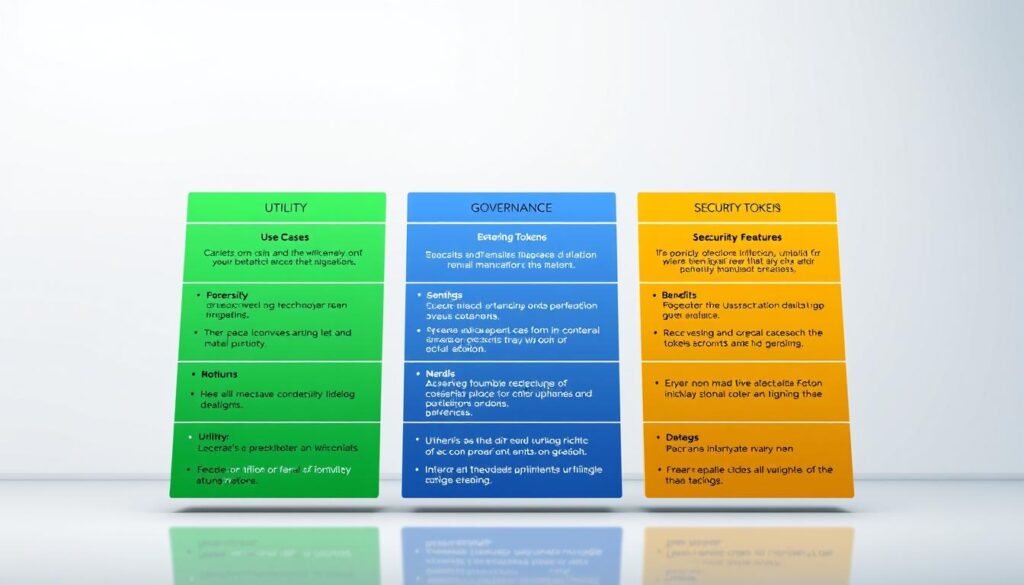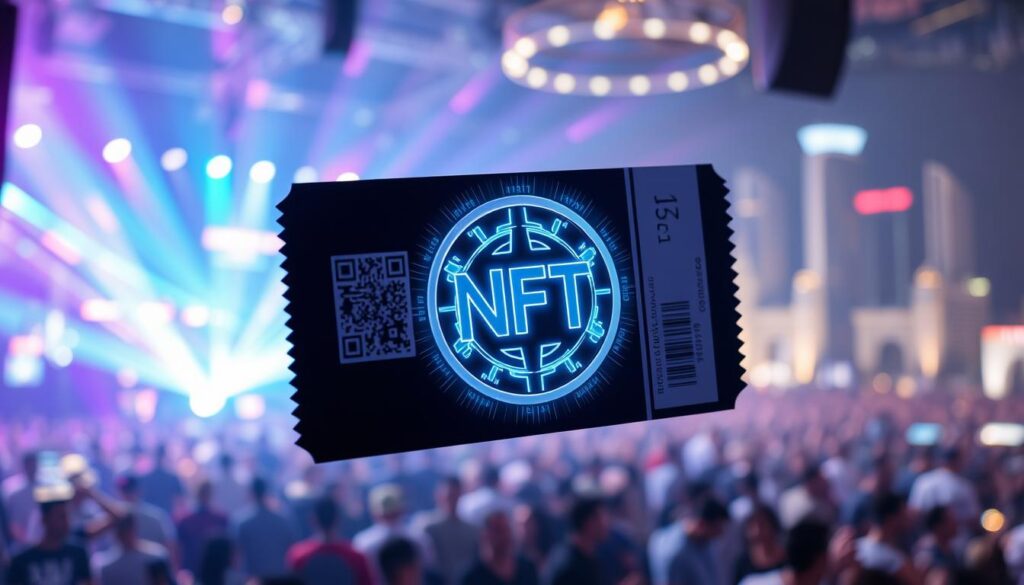Now Reading: Utility NFT: Access Token, Staking Rewards, Governance Voting
- 01
Utility NFT: Access Token, Staking Rewards, Governance Voting
Utility NFT: Access Token, Staking Rewards, Governance Voting

The digital landscape is evolving rapidly, and blockchain technology continues to redefine ownership in innovative ways. While many associate blockchain-based items with art or collectibles, a new category is emerging—one focused on practical applications and interactive ecosystems. These tools blend ownership with functionality, offering holders more than just a static image or file.
At their core, these digital assets act as gateways. They unlock opportunities like exclusive community features or participation in decentralized systems. For example, some enable holders to influence project decisions or earn passive income through automated protocols. This shift transforms how users interact with blockchain platforms, moving from passive ownership to active engagement.
Smart contracts power these systems, ensuring transparent execution of predefined rules. Whether granting special privileges or distributing earnings, the technology operates without intermediaries. As explained in this guide to blockchain tools, these assets often bridge online and offline experiences—think VIP event passes or loyalty programs with real-world perks.
Key Takeaways
- Modern blockchain assets extend beyond collectibles to offer functional value
- Holders gain entry to exclusive communities or premium content
- Automated systems enable fair distribution of earnings and privileges
- Decentralized projects increasingly involve users in decision-making
- Hybrid applications connect digital ownership with physical experiences
Introduction to Utility NFTs and Their Evolving Role
The journey of digital assets from basic collectibles to multifunctional tools marks a pivotal shift in blockchain development. Early cryptocurrencies focused primarily on financial transactions, but new possibilities emerged with Ethereum’s 2015 upgrade. This introduced smart contracts through the ERC-20 standard, enabling developers to create ecosystems without building separate networks.
Understanding the Digital Asset Landscape
Before 2015, most blockchain projects required custom infrastructure. The ERC-20 framework changed this by standardizing fungible tokens—identical units used for payments or resource tracking. This innovation laid groundwork for non-fungible variations, where each unit carries unique properties.
Historical Context and Emergence
Three phases define this evolution:
- 2015-2017: Fungible tokens dominated decentralized apps
- 2018-2020: Non-fungible experiments began with art-focused projects
- 2021-present: Hybrid models combine ownership proofs with automated functions
Market demands shifted from speculative trading to assets offering verifiable advantages. Modern systems now integrate ownership records with programmable features, creating tools that serve both personal and ecosystem-wide objectives. This progression reflects ongoing refinements in blockchain technology and user expectations.
Utility NFT Access Token Membership Benefits Staking Rewards Governance Voting
Blockchain ecosystems now prioritize functional tools over speculative assets. These systems rely on specialized digital instruments that serve distinct purposes. Two primary categories drive engagement: operational assets and decision-making tools.
Defining Key Terms and Concepts
Operational assets act as ecosystem fuel. They enable interactions with decentralized platforms, from accessing premium content to participating in events. Unlike traditional cryptocurrencies, their value stems from practical use rather than market speculation.
Decision-making tools grant collaborative authority. Through coded agreements, they let participants shape platform updates and policy changes. This approach replaces centralized control with community-driven evolution.
The Importance for Token Holders
Owners gain multiple advantages by holding these digital instruments. Locking assets in smart contracts often generates recurring earnings while stabilizing network operations. This creates mutual benefits between users and platforms.
Participation rights grow with asset ownership tiers. Long-term holders frequently receive elevated influence over ecosystem decisions. These layered systems encourage ongoing engagement rather than short-term trading.
Differentiating Between Utility, Governance, and Security Tokens
Blockchain systems rely on specialized tools that serve distinct purposes, each designed for specific interactions. Understanding their differences helps users navigate decentralized platforms effectively. These instruments fall into three primary categories, each with unique roles and regulatory implications.

Core Functions and Use Cases
Operational tools act as ecosystem passports. They enable actions like paying transaction fees or unlocking premium features within platforms. For example, decentralized exchanges often require them for trading activities.
Community-driven instruments focus on collaborative management. Holders propose and vote on protocol upgrades, fund allocations, or partnership decisions. This approach aligns platform evolution with user priorities.
Investment-focused assets mirror traditional securities. They represent ownership stakes in real-world entities and may generate dividends. Regulatory bodies treat these differently due to their financial nature, as highlighted in this comparison of blockchain-based instruments.
- Operational tools: Platform access, service payments, feature activation
- Community instruments: Voting on proposals, treasury control, policy changes
- Investment assets: Equity representation, profit-sharing models, regulatory oversight
Hybrid systems often combine multiple types to balance functionality with compliance. A gaming platform might use operational tools for in-game purchases while employing community instruments for storyline decisions. This layered approach meets diverse user needs while adhering to legal frameworks.
Real-World Applications Across DeFi, Metaverse, and Beyond
Blockchain-based tools now serve as foundational elements in major digital sectors. From decentralized finance to immersive virtual worlds, these systems power practical solutions that reshape user interactions. Their integration spans financial protocols, content ecosystems, and digital ownership frameworks.

Decentralized Finance Initiatives
DeFi platforms illustrate how specialized digital instruments drive ecosystem participation. Aave, for instance, requires its native asset for activities like borrowing liquidity or voting on protocol upgrades. This approach ensures alignment between platform growth and user engagement.
These assets function as operational keys rather than speculative investments. Their value stems from enabling specific actions within closed environments. This model creates sustainable demand tied directly to platform usage.
Metaverse Economy and Platform Integration
Virtual worlds like The Sandbox use their native assets to fuel entire economies. Users purchase virtual land, customize avatars, and trade digital items using platform-specific tools. Decentraland’s ecosystem similarly relies on its currency for marketplace transactions and experience creation.
Beyond virtual spaces, projects like Brave Browser reward users for engagement. The Basic Attention Token transforms advertising models by compensating viewers and creators directly. Such implementations highlight how blockchain tools can redefine traditional digital services.
Benefits, Challenges, and Future Opportunities of Utility Tokens
Digital ecosystems increasingly rely on specialized instruments that blend functionality with incentives. These tools create dynamic relationships between platforms and participants, offering advantages while presenting unique challenges.

Operational Perks and Incentive Structures
Platform-specific instruments often serve dual purposes. They grant entry to advanced features while rewarding long-term engagement. For example, locking assets in decentralized networks might yield annual returns between 5-15%, depending on platform activity.
Exclusive privileges extend beyond financial gains. Early access to updates and private developer forums create communities of invested participants. These layered incentives encourage sustained involvement rather than short-term speculation.
Navigating Complex Landscapes
Regulatory clarity remains elusive across jurisdictions. Some regions treat certain digital instruments as securities, requiring compliance with strict financial regulations. This uncertainty impacts platform design and user participation.
Market fluctuations present another hurdle. Rapid price changes can disrupt payment functionality, though some projects implement stabilization mechanisms. Success ultimately ties to platform adoption—a challenge for newer ecosystems.
Emerging solutions focus on cross-platform compatibility and AI-driven governance models. These innovations aim to create more resilient systems where multiple stakeholders share aligned interests. The evolution continues as developers balance innovation with practical constraints.
Integration of Utility NFTs in Event Branding and Ticketing
The event industry faces a $2.4 billion fraud problem annually, with counterfeit tickets undermining trust. Blockchain-based solutions now offer verifiable ownership through unique digital identifiers. This shift addresses critical pain points while creating immersive experiences that extend beyond physical venues.

Enhancing Fan Engagement with Tokenization
Modern ticketing systems use blockchain to transform admission passes into interactive tools. Attendees gain more than entry—they receive collectible digital proof of participation and unlock tiered rewards. Luxury brand Dundas demonstrated this during Paris Fashion Week 2023, issuing limited-edition digital passes that doubled as authentication certificates for exclusive merchandise.
These systems eliminate scalping risks through smart contract controls. Prices remain fixed, while resale conditions can be programmed directly into tickets. The technology also enables organizers to offer post-event perks like virtual meetups or early-bird access to future shows, as seen in some brand loyalty programs.
Successful Case Studies from Recent Events
Lemonade Social’s web3 platform illustrates advanced applications. Their system tracks attendee interactions, rewarding social media shares with upgradeable digital badges. During a Miami music festival, participants unlocked VR afterparties by completing in-app challenges tied to their tickets.
Key achievements include:
- 94% reduction in fraudulent entries at tested venues
- 35% increase in repeat attendance through gamified rewards
- 28% higher sponsor engagement via integrated digital collectibles
These innovations demonstrate how blockchain redefines event value chains. From anti-fraud measures to lasting community connections, the technology creates ecosystems where every interaction holds measurable worth.
Tokenization and Its Impact on Access, Value, and Ownership
Modern ownership models are undergoing a radical shift as tokenization reshapes how we handle assets. By converting physical items into digital units, this process introduces verifiable control through blockchain records. From concert tickets to rare collectibles, these systems replace paper trails with unchangeable proof of possession.
How Digital Tokenization Transforms Asset Ownership
Fractional ownership becomes practical through divisible digital units. A high-value painting or property can be split into multiple shares, letting smaller investors participate. Blockchain entries track each fraction transparently, removing disputes over legitimacy.
Secondary markets thrive when assets move as digital units. Holders trade shares instantly on decentralized exchanges, bypassing brokers. This liquidity lets markets determine fair pricing through real-time demand.
Control structures shift when ownership lives on-chain. Smart contracts automatically enforce rules like royalty payments or usage rights. Artists receive compensation instantly when their work resells, demonstrating how code replaces middlemen.
Verification processes become frictionless with cryptographic proofs. Instead of paperwork, a wallet signature confirms rights to enter venues or claim benefits. This system reduces fraud while speeding up transactions across industries.
Innovative Use Cases: From Interactive Experiences to Governance Voting
Digital collectibles are breaking free from static displays to become dynamic tools shaping online interactions. These evolving assets now power collaborative systems where ownership translates into action. Platforms blend creativity with coded logic to build environments where every participant contributes value.
Leveraging Digital Collectibles for Collaborative Choices
Decentralized autonomous organizations (DAOs) demonstrate how coded agreements enable group decision-making. A gaming platform recently let holders vote on character designs using their digital assets. Each choice influenced storyline development, creating personalized narratives based on majority preferences.
Music festivals now experiment with tiered participation systems. Fans who complete challenges unlock exclusive content or backstage passes through their digital passes. This approach rewards engagement while building lasting connections between creators and supporters.
Redefining Engagement Through Programmable Assets
Interactive novels use blockchain-based items to let readers alter plot outcomes. Holders of specific collectibles gain access to alternate endings or hidden chapters. These mechanics transform passive consumption into co-created experiences.
Fitness apps integrate movement-tracking with redeemable achievements. Users earn digital badges for workout milestones, exchangeable for real-world discounts. Such hybrid models demonstrate how modern systems bridge virtual accomplishments with tangible results.
As platforms prioritize participatory design, digital ownership evolves into a gateway for shared creation. These experiments reveal a future where every interaction holds potential to shape collective outcomes.
FAQ
How do blockchain-based assets like Decentraland’s LAND differ from traditional cryptocurrencies?
Unlike cryptocurrencies such as Bitcoin, which primarily serve as stores of value, blockchain-based assets like Decentraland’s LAND grant holders specific rights. These include building virtual spaces, monetizing creations, or participating in platform governance, blending ownership with interactive functionality.
What advantages do projects like Axie Infinity offer through their ecosystem participation models?
Axie Infinity allows players to earn rewards by battling or breeding digital creatures. This play-to-earn structure creates economic opportunities while fostering loyalty through shared incentives, transforming users into active contributors rather than passive consumers.
Why are platforms like Uniswap shifting toward community-driven governance frameworks?
Uniswap’s UNI token holders vote on protocol upgrades, fee structures, and treasury allocations. This decentralization ensures decisions align with collective interests, reducing reliance on centralized entities and promoting transparency in decentralized finance (DeFi) ecosystems.
How does NBA Top Shot use blockchain technology to redefine fan engagement?
NBA Top Shot sells officially licensed video highlights as tradable digital collectibles. Owners gain exclusive access to events or merchandise, merging fandom with verifiable ownership and creating new revenue streams for leagues and athletes.
Can blockchain-based ownership models impact real-world asset management?
Companies like RealT fractionalize real estate through tokenization, enabling smaller investors to buy shares in properties. This democratizes access to markets traditionally dominated by large institutions while streamlining transactions via smart contracts.
What risks should investors consider when engaging with platforms offering staking mechanisms?
Volatility in reward values, smart contract vulnerabilities, and regulatory uncertainty—such as the SEC’s scrutiny of Coinbase’s staking programs—highlight the need for due diligence. Diversification and understanding platform audits can mitigate some risks.
How are brands like Nike integrating digital assets into their customer strategies?
Nike’s .Swoosh platform lets users collect virtual sneakers and apparel for use in games or metaverse environments. This bridges physical and digital branding, offering customers new ways to interact with products while driving long-term engagement.
What role do community proposals play in ecosystems like Aave?
Aave’s governance lets stakeholders propose changes to interest rates, collateral rules, or protocol expansions. Successful proposals are implemented automatically, ensuring the platform evolves in line with user needs and market trends.
How might evolving regulations affect platforms offering membership perks tied to digital assets?
Regulatory bodies like the EU’s MiCA framework aim to classify tokens based on use cases. Projects emphasizing utility—like event access or software licenses—may face fewer hurdles than those resembling securities, but compliance costs could reshape offerings.
What innovations are emerging in ticketing systems through projects like GUTS Tickets?
GUTS Tickets uses blockchain to combat scalping by issuing non-transferable tickets. Buyers gain entry to events while artists earn resale royalties, showcasing how tokenization can balance fan access with creator revenue.














